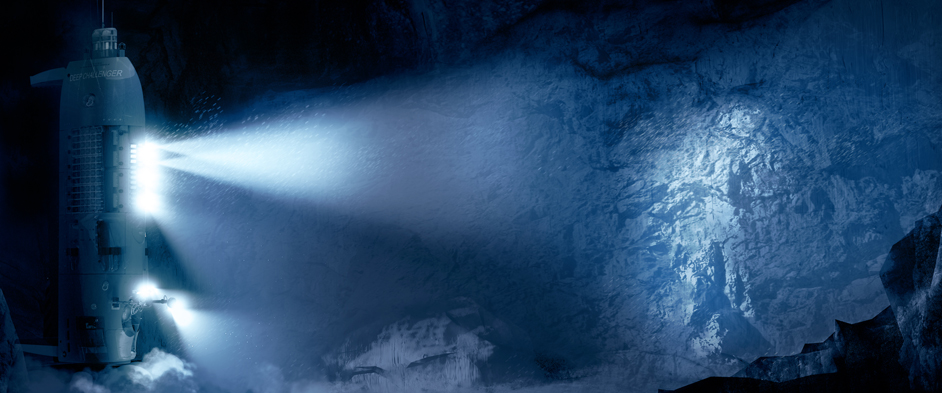WHAT'S NEXT

Knowledge Transfer and Partnerships
- On March 26, 2013, the one-year anniversary of his record-setting dive to Challenger Deep, Cameron announced a formal partnership with Woods Hole Oceanographic Institution (WHOI), a world leader in oceanographic research and technology, specifically manned and unmanned deep submergence vehicles. The DEEPSEA CHALLENGER was transferred to WHOI, where its engineering advancements have been incorporated into current and future research platforms and deep-sea expeditions.
- Cameron joined the advisory board of WHOI’s Center for Marine Robotics.
Scientific Research and Publication
The expedition science team has conducted ongoing research based on analyses of water, sediment, biological samples, and extensive imagery collected by the DEEPSEA CHALLENGER and two free-falling landers. Cameron and expedition scientists have presented their preliminary research findings at academic conferences across the country, including the annual meetings of the American Geophysical Union, the Society for Integrative and Comparative Biology, and the Association of Sciences for Limnology and Oceanography.
- American Geophysical Union Annual Meeting (San Francisco, California, December 4, 2012): At this conference the expedition’s core science team, together with James Cameron, presented details about the engineering behind the submersible and shared the preliminary scientific results of the expedition’s research. (Also watch National Geographic News video of Cameron discussing the preliminary findings.)
- Society for Integrative and Comparative Biology Annual Meeting (San Francisco, California, January 7, 2013): At this conference, expedition scientists presented preliminary biological science findings.
- Association of Sciences for Limnology and Oceanography Aquatic Sciences Meeting (New Orleans, Louisiana, February 22, 2013): At this conference, expedition scientists presented preliminary biological analyses.
What’s Next for the Expedition’s Scientific Research?
DEEPSEA CHALLENGE expedition scientists are wrapping up their analysis of water and sediment samples, video and still images, and oceanographic and geological data collected in the New Britain and Mariana Trenches by the DEEPSEA CHALLENGER and its complementary science platform, a free-falling lander. Microbiologists have identified new microbial species. Microbial cultures continue to be grown under conditions that mimic the high-pressure, low-temperature environment of the ocean’s trenches.
Biologists have identified at least two new species of shrimp like crustaceans known as amphipods; identified the deepest sea cucumber ever observed; sampled the deepest expression of gigantism in amphipods ever sampled; and identified a compound in amphipods that is in clinical trials to treat Alzheimer’s. And yet a great deal of work remains to be done to better understand how these organisms adapt to the deep-ocean-trench ecosystem, and their implications for broader scientific—and pharmaceutical—research.
Earth and planetary scientists are wrapping up their analysis of sediment collected in the Mariana Trench’s Sirena Deep. Cameras deployed to the Sirena Deep may have captured our planet’s deepest known microbial community thriving solely on the byproducts of serpentinization, a chemical reaction between mantle rocks and water. The heat and gases produced by this reaction are an important energy source for microorganisms. This discovery is contributing to origin-of-life hypotheses here on earth and to the search for the evidence of life on the ice-covered moons of Jupiter and Saturn. All in all, the rich data set collected as part of the DEEPSEA CHALLENGE expedition continues to provide a significant contribution to our understanding of the underexplored deep-ocean trenches—Earth’s final frontier.



